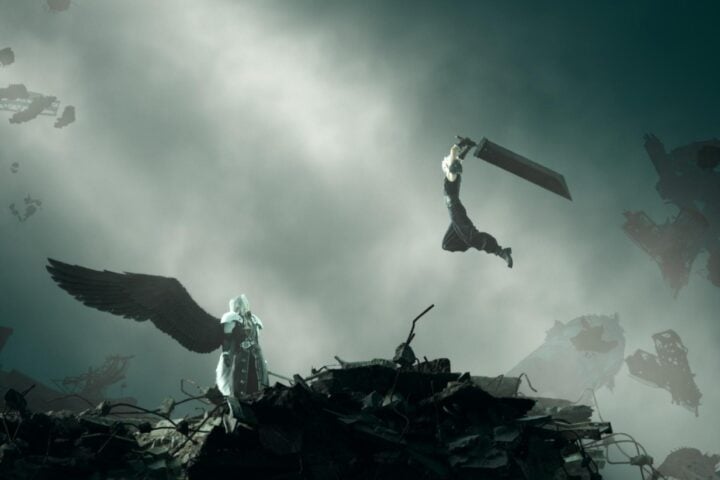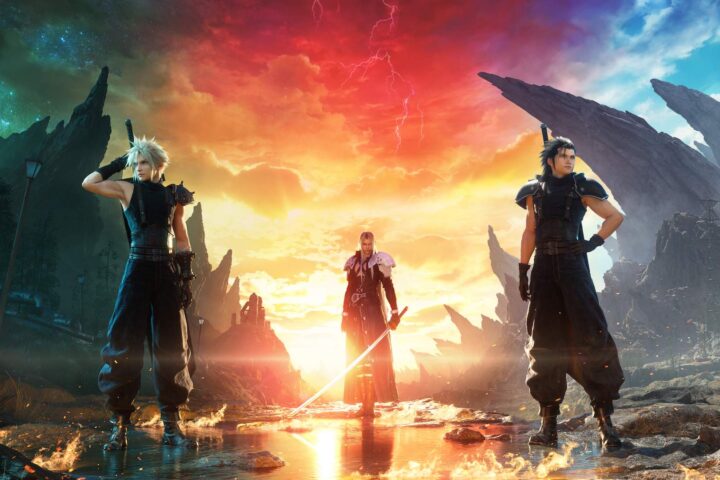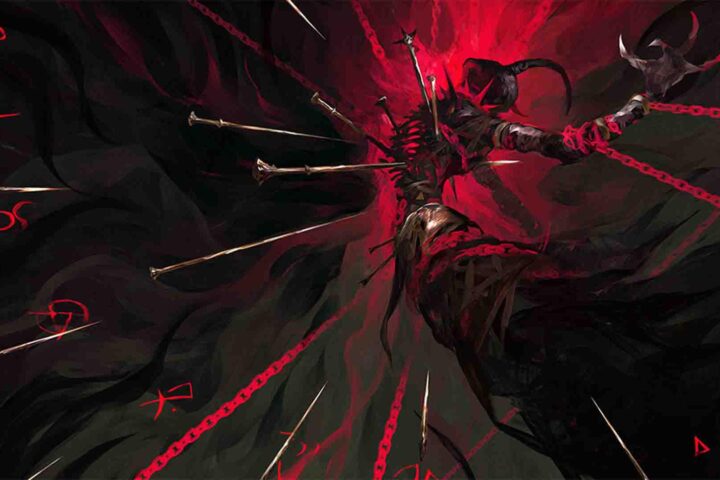There’s a famed scene in Peter Jackson’s The Fellowship of the Ring that doesn’t appear in J.R.R. Tolkien’s novel. During a quaint moment at the start of their epic journey, Sean Astin’s Samwise Gamgee stops midstride in a grassy field, gripped by a sudden realization. “If I take one more step, it’ll be the farthest away from home I’ve ever been,” he says. And with Frodo’s encouragement, he does, and nothing about their journey is quaint ever again.
Similarly, having been chased out of the once peaceful village of Kalm and forced out into the pastoral grasslands outside the city of Midgar, Cloud Strife and his friends look back at the city they’ve left behind and the Shinra helicopters hunting them down. They then turn toward the unknown, pondering the uncharted road ahead with caution until Aerith Gainsborough, as undaunted and hopeful as ever, chimes in about the beauty of the world stretching before them, saying how grateful she is to be able to gaze upon it alongside her friends.
Final Fantasy VII Rebirth unfolds across a half-dozen country-sized open areas on the endangered little planet of Gaia that extend far off into the horizon. Snarling beasts of various sizes wander these lands seeking battle, and free folk attempt to eke out a living outside the auspices of megacorporation Shinra, fighting the power however they can. For these people living outside Midgar, this is a freedom protected by a shadow network of self-sufficiency, secrets, subterfuge, and simmering generational distrust of authority.
Creatively, Rebirth owes its hard-won freedom to its immediate predecessor, Final Fantasy VII Remake, and the work it did to unpack the idea of remaking such an iconic game as Final Fantasy VII in the first place. That makes it all the more fascinating that Rebirth is, ultimately, a story about determinism, about people who understand the destiny that awaits them and find themselves wrestling with whether it’s better to let it play out or try to do things differently.
As much as Square Enix had carte blanche to tell whatever story they wanted to tell with Rebirth, the broad strokes of the tale we get here will be largely familiar to fans of the original game. Specifically, Rebirth goes from our heroes’ exile from Midgar all the way to what would’ve been the end of disc one in the original game. In search of a way to stop Shinra from bleeding the planet’s lifeforce dry and über-antagonist Sephiroth from destroying what’s left, Cloud and his companions find themselves trekking around the world. Along the way, they make a slew of new friends and are hunted by some old enemies, while, at the same time, a veritable army of pale, dying men in black robes shamble mindlessly in their same general direction.
Ultimately, Rebirth’s true greatness lies in its granular concreteness. The sheer size of the world beyond Midgar is impressive, and given how biologically and geologically diverse it all is, it’s astonishing how Rebirth’s approach to open-world design makes it feel as if we’re truly exploring an actual world. Not an inch of it feels copy-pasted or empty. Even in sand-blasted deserts of poverty like North Corel, on the western continent of the planet, it feels like there’s a story explaining why every square foot of the world is the way it is, some piece of history to learn, some weird quirky minigame to play, a flashback waiting to be unearthed, some local resource to be found that only grows in what only seems like the middle of nowhere.
More than this, Rebirth puts a premium on learning how and why the world functions the way it does instead of trying to bend the world to your will. Progress requires talking to locals, scavenging ruins to find out what kind of vehicle or chocobo will get our heroes where they need to go. Throughout, the game’s deep-seated respect for the natural world is refreshingly at odds with the “do what thou wilt” approach of most modern open-world games.
Rebirth takes a Like a Dragon-esque approach to its mechanical storytelling, where new activities and bespoke types of gameplay are still being introduced dozens and dozens of hours into the campaign. Perhaps inevitably, they’re not all winners, and being narratively stuck in an area because the new mechanics that the game introduces just for a single dungeon are clumsily executed can be a source of frustration. But those moments are rare compared to the number of activities worth returning to well after you’ve reaped all of their rewards.
Owing, perhaps, to its sheer size, Rebirth’s narrative meanders more than that of its predecessor, and yet its various forays away from the critical path consistently feel purposeful. There are no throwaway characters at the forefront of this tale. Everyone is broken in some way by the various iniquities of this world, their determination shaken at some point.
For Cloud, Aerith, and Tifa in particular, the terrifying, metaphysical horror of their journey also forces more personal but no less disquieting confrontations. But those moments of darkness are always balanced by light, by people surrounded by magic who can still have their breath taken away by a tribe’s sacred rituals, warriors gaining the grudging respect of one’s enemies, or by visiting grieving parents to offer them comfort. That’s all to say nothing of the extreme moments of joyous, quirky humor, and an indulgence in unadulterated cuteness for its own sake.
Throughout, Cloud and his motley troupe of friends are given the space and opportunity to be more than just heroes, even more than just friends, or potentially lovers, but human beings who are rightfully unsure of what power they have to stop the inevitable. These are still the familiar heroes on the same journey they were on in 1997, unsure of their roles as eco-terrorists turned fugitives on a nebulous quest against a force of unfathomable, alien evil, but more than just the size and scale of Rebirth as an RPG, there’s so much more catharsis in the telling.
This game was reviewed with code provided by fortyseven communications.
Since 2001, we've brought you uncompromising, candid takes on the world of film, music, television, video games, theater, and more. Independently owned and operated publications like Slant have been hit hard in recent years, but we’re committed to keeping our content free and accessible—meaning no paywalls or fees.
If you like what we do, please consider subscribing to our Patreon or making a donation.




